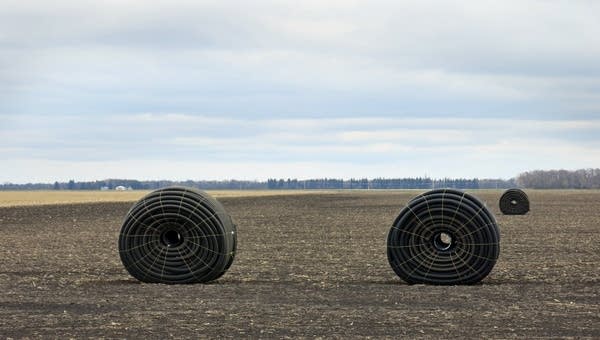After decades of draining, some MN farmers look to put water back

Large rolls of drain tile sat in a field on Gerry Zimmerman's farm near Moorhead on April 21, 2015. The tile will be plowed under the field surface before crops are planted this spring.
Dan Gunderson | MPR News
Go Deeper.
Create an account or log in to save stories.
Like this?
Thanks for liking this story! We have added it to a list of your favorite stories.


